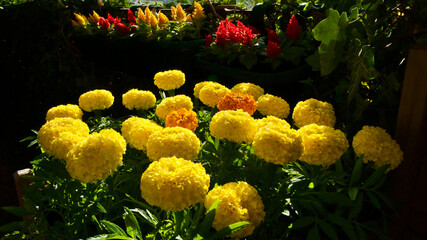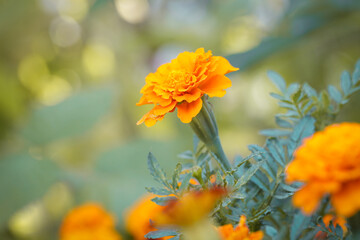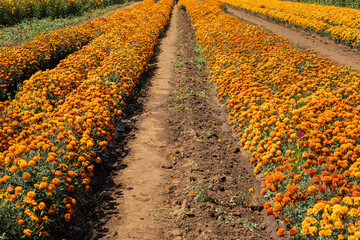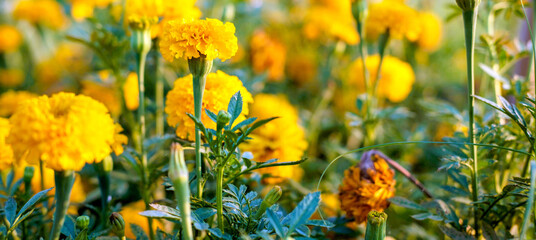



"Explore Trees, Discover Nature. " -Fr.Principal




Members of the genus Tagetes have attractive yellow, orange, or red composite flowers that are solitary on the stems or clustered. The leaves are arranged opposite each other on the stem and are usually finely cut. Characteristic bracts (leaflike structures) form a cup-shaped base below each flower head.Tagetes species vary in size from 0.1 to 2.2 m tall. Most species have pinnate green leaves. Blooms naturally occur in golden, orange, yellow, and white colors, often with maroon highlights. Floral heads are typically (1-) to 4–6 cm diameter, generally with both ray florets and disc florets. In horticulture, they tend to be planted as annuals, although the perennial species are gaining popularity. They have fibrous roots.
1. Marigolds are widely cultivated for their bright and colorful flowers, making them popular choices for ornamental gardens, landscapes, and flower arrangements.
2.Marigold flowers, particularly Calendula officinalis, have medicinal properties and are used in traditional herbal medicine.
3. The vibrant hues of marigold flowers can be used as a natural dye for fabrics and textiles.
4. Marigolds have been explored for their potential in phytoremediation, helping to absorb pollutants from the soil and water.
5. Marigolds are often used in traditional festivals and cultural events, symbolizing joy, celebration, and positive energy.